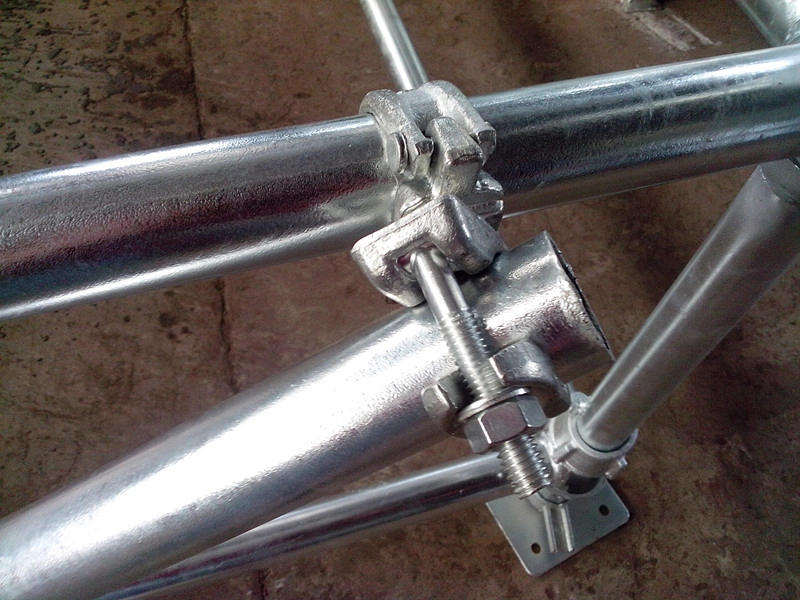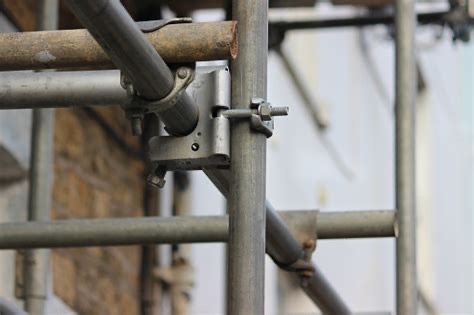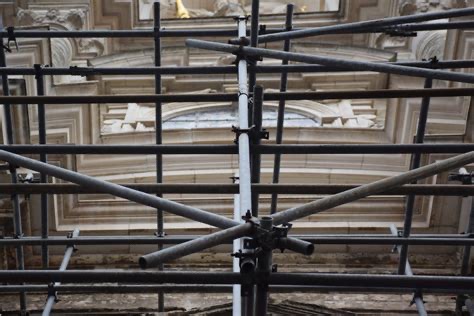Content Menu
● Introduction to Scaffolding Tubes and Couplers
● Standard Sizes of Scaffolding Tubes
>> Outer Diameter (OD)
>> Wall Thickness
>> Lengths
● Materials and Surface Treatment
● Standard Sizes of Scaffolding Couplers
>> Common Coupler Types and Sizes
>> Coupler Size Variations
● Weight and Dimensions of Couplers
● Standards Governing Scaffolding Tubes and Couplers
>> British Standard BS1139
>> European Standard EN39 and EN74
>> Australian/New Zealand Standard AS/NZS 1576
● Applications of Standard Scaffolding Tubes and Couplers
● Choosing the Right Size for Your Project
● Maintenance and Inspection
● Conclusion
● FAQ
>> 1. What is the standard outer diameter of scaffolding tubes?
>> 2. What wall thickness is typical for scaffolding tubes?
>> 3. Are scaffolding couplers interchangeable between different tube sizes?
>> 4. What are the main types of scaffolding couplers?
>> 5. How often should scaffolding tubes and couplers be inspected?
Scaffolding is an essential component in construction, maintenance, and industrial projects, providing safe access and working platforms at height. The scaffolding tube and coupler system remains one of the most versatile and widely used scaffolding methods worldwide. Understanding the standard sizes for scaffolding tubes and couplers is crucial for safety, compatibility, and efficiency on site.

Introduction to Scaffolding Tubes and Couplers
Scaffolding tubes are steel pipes that form the structural framework of scaffolding. Couplers (also called clamps) are mechanical fittings that connect these tubes in various configurations. The scaffolding tube and coupler system allows for flexible, strong, and safe scaffold structures adaptable to complex geometries.
Standard Sizes of Scaffolding Tubes
Outer Diameter (OD)
The globally accepted standard outer diameter for scaffolding tubes is 48.3 mm (approximately 1.9 inches). This size is specified by international standards such as BS1139 (UK), EN39 (Europe), and ASTM standards (USA).
- Common variations:
- Japanese Industrial Standards (JIS) use 48.6 mm OD tubes.
- Chinese standards often specify 48.0 mm OD tubes.
- Other sizes like 42 mm, 60 mm, 76 mm, and 89 mm are used for specialized or heavy-duty scaffolding applications.
Wall Thickness
The typical wall thickness of scaffolding tubes ranges between 3.2 mm to 4.0 mm.
- 3.2 mm thickness is common for general scaffolding.
- 4.0 mm thickness is used for higher load or heavy-duty applications.
- Some tubes have thicker walls (up to 4.88 mm) for specialized uses like shoring.
Lengths
Standard tube lengths vary by manufacturer and region, but common lengths include:
| Length (meters) | Length (feet) |
| 1.5 | 5 |
| 1.8 | 6 |
| 2.4 | 8 |
| 3.0 | 10 |
| 3.9 | 13 |
| 4.8 | 16 |
| 6.0 | 20 |
Longer tubes are often custom ordered or spliced on-site using sleeve couplers.
Materials and Surface Treatment
- Material: Most scaffolding tubes are made from Q235 or Q345 carbon steel, offering good strength and ductility.
- Surface Treatment: To prevent corrosion, tubes are usually hot-dip galvanized, providing a durable zinc coating. Some tubes are electro-galvanized or painted depending on application.

Standard Sizes of Scaffolding Couplers
Couplers connect tubes to form rigid scaffolding structures. The size of couplers corresponds to the tube diameter to ensure a secure fit.
Common Coupler Types and Sizes
| Coupler Type | Typical Tube Size Compatibility | Description |
| Fixed Coupler | 48.3 mm OD | Joins two tubes at right angles (90°). |
| Swivel Coupler | 48.3 mm OD | Joins tubes at any angle, allows rotation. |
| Sleeve Coupler | 48.3 mm OD | Joins two tubes end-to-end (splicing). |
| Putlog Coupler | 48.3 mm OD | Connects putlog tubes to ledger tubes. |
| Board Retaining Coupler | 48.3 mm OD | Secures scaffold boards to tubes. |
| Beam Coupler | 48.3 mm OD or larger | Connects scaffold tubes to beams or girders. |
Coupler Size Variations
- The most common coupler size matches the 48.3 mm OD tube.
- Other sizes include 42 mm, 60 mm, 76 mm, and 89 mm couplers, used for specialized scaffolding or heavy-duty props.
- Couplers are manufactured to standards such as BS1139, EN74, and AS/NZS 1576.
Weight and Dimensions of Couplers
- Fixed double couplers typically weigh around 0.96 to 1.1 kg for 48.3 mm tubes.
- Swivel couplers are slightly heavier, around 1.1 to 1.2 kg.
- Sleeve couplers weigh about 1.0 kg.
- Weights vary slightly depending on manufacturing method (forged vs. pressed steel) and surface finish.
Standards Governing Scaffolding Tubes and Couplers
British Standard BS1139
- Specifies dimensions, materials, and performance for scaffolding tubes and couplers.
- Requires tubes to have an OD of 48.3 mm and wall thickness between 3.2 and 4.0 mm.
- Couplers must meet strength and slip resistance criteria.
European Standard EN39 and EN74
- EN39 covers tubes; EN74 covers couplers.
- Defines classes of couplers (Class A and Class B) based on load and deformation limits.
- Ensures interchangeability and safety.
Australian/New Zealand Standard AS/NZS 1576
- Similar specifications for tube sizes and couplers.
- Includes requirements for galvanizing and mechanical properties.
Applications of Standard Scaffolding Tubes and Couplers
- Construction: Building facades, formwork support, access scaffolds.
- Industrial Maintenance: Equipment access, plant shutdowns.
- Events: Temporary stages, platforms.
- Specialized Scaffolding: Shoring, suspended scaffolds, cantilever scaffolds.
Choosing the Right Size for Your Project
- Match coupler size exactly to tube OD for safety.
- Choose wall thickness based on load requirements.
- Consider environmental exposure to select appropriate galvanizing.
- Use heavier-duty couplers for industrial or heavy scaffolding.
Maintenance and Inspection
- Regularly inspect tubes and couplers for damage or corrosion.
- Replace components showing wear or deformation.
- Ensure couplers are tightened to recommended torque (typically 54 Nm).
- Store components properly to prevent rust.
Conclusion
Understanding the standard sizes for scaffolding tubes and couplers is fundamental to building safe, stable, and compliant scaffolding structures. The most common scaffolding tube size is 48.3 mm OD with wall thicknesses between 3.2 and 4.0 mm. Couplers are manufactured to match these sizes precisely, with common types including fixed, swivel, and sleeve couplers. Adhering to international standards such as BS1139, EN74, and AS/NZS 1576 ensures quality and safety. Proper selection, installation, and maintenance of scaffolding tubes and couplers are essential for successful project outcomes.

FAQ
1. What is the standard outer diameter of scaffolding tubes?
The most common standard outer diameter is 48.3 mm (approximately 1.9 inches).
2. What wall thickness is typical for scaffolding tubes?
Wall thickness typically ranges from 3.2 mm to 4.0 mm, depending on load requirements.
3. Are scaffolding couplers interchangeable between different tube sizes?
No, couplers must match the tube's outer diameter exactly for a secure and safe fit.
4. What are the main types of scaffolding couplers?
Common types include fixed (double) couplers, swivel couplers, sleeve couplers, putlog couplers, and board retaining couplers.
5. How often should scaffolding tubes and couplers be inspected?
They should be inspected before each use and regularly during use for signs of damage, corrosion, or wear.






















